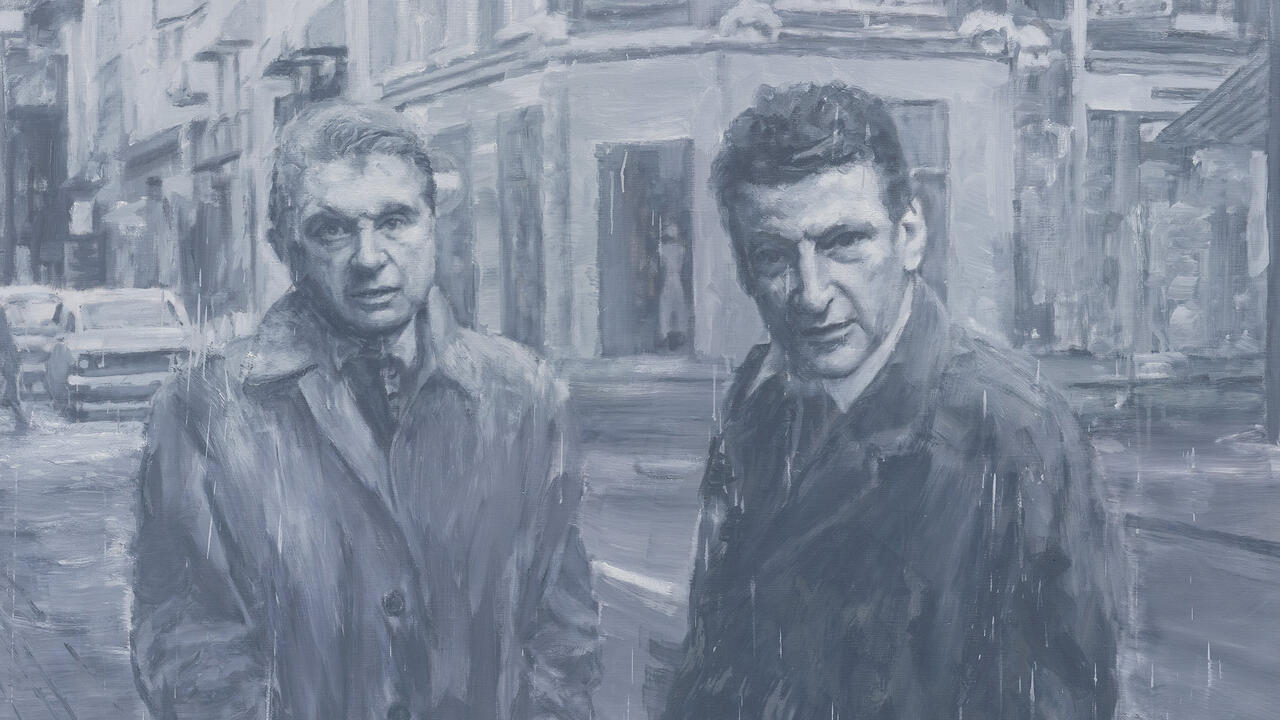Verena Dengler
Galerie Meyer Kainer
Galerie Meyer Kainer

‘Namedropping’ read a succinct (and honest) sign at the entrance to Verena Dengler’s exhibition Dengled Up In Blue. Indeed, the show contained countless references, beginning with a title that riffs on Bob Dylan’s ballad Tangled Up In Blue (1975). Dengler’s work has long been full of allusions – from Austrian tableware to Abstract Expressionism – and this show also featured her usual engagement with craft with her embroidered pictures and her combinations of diverse materials and techniques, from painting to machine-made carpets. But Dengled Up In Blue self-awarely linked this referential practice with an inquiry into current conditions of artistic work, especially with regard to problems of artistic identity and visibility in networks (both on- and offline).
With a nod to Martin Kippenberger’s hotel drawings of the 1980s and ’90s, here were six self-portraits on hotel notepaper entitled Daddy went on a business trip and all I got was this lousy hotel stationery (2013). Dengler mounted the cheap hotel paper on expensive watercolour stock, a move that feels like an ironic reference to the traction of the Kippenberger brand within the art market. But the work’s title could also be understood as a reference to the art world’s globetrotting. In this light, Dengler’s use of self-portraiture takes on a special significance, as it recalls the usual ‘who’s who’ photographs on art blogs and columns like Artforum.com’s Scene & Herd. The logic of the internet is based on maximizing distribution – an economy entirely different from the art market’s logic of scarcity (even if the two have long been linked). But Dengler’s work thwarts both; it neither functions as a specific homage to Kippenberger in the sense of value-adding citation, nor do the materials and techniques allow for the uncontrolleable circulation of digital images.
Such questions of visibility are raised not only by the art world with its mechanisms or circulation and increasing value, but also by the artistic process itself. ‘If she copies something for which she herself was the model, who or what is the original?’ Under the pseudonym Envy Nordpol, Dengler poses this question in an essay accompanying the exhibition, referring to a further series of eight drawings. As their titles indicate – titles like After a portrait of Verena Dengler by Lucy McKenzie (Brian Eno drawings, 2003) (2013) – these are portraits of Dengler made by other artists that she in turn transferred into pencil drawings. Not least, this is about the artist reclaiming her own image. In doing so, she links claims to authorship with a reference to a blind spot in art production: the mostly unknown models. Where the origin of images is pushed into the background, real power relations are easily denied.
The importance of virtual spaces as locations for art was underlined by a sculpture demonstratively titled Digital Native (2014). In the shape of a zigzag line, it suggests that the ‘www’ abbreviation attached to it (along with ‘http’) could be endlessly continued. The Envy Nordpol essay also mentions the ‘fluid’ and ‘airy’ quality of the Internet, equating it with blueness and specifically the blue flower of German Romanticism. The colour blue also acted as visual glue for the show as a whole – from blue-tinted photographic portraits of the artist to blue lines on the carpet. In Dengled Up in Blue, it was both a colour and a metaphor. It linked the concrete, visible location with the virtual space of the internet – two multiply interconnected platforms for art.
Translated by Nicholas Grindell

















